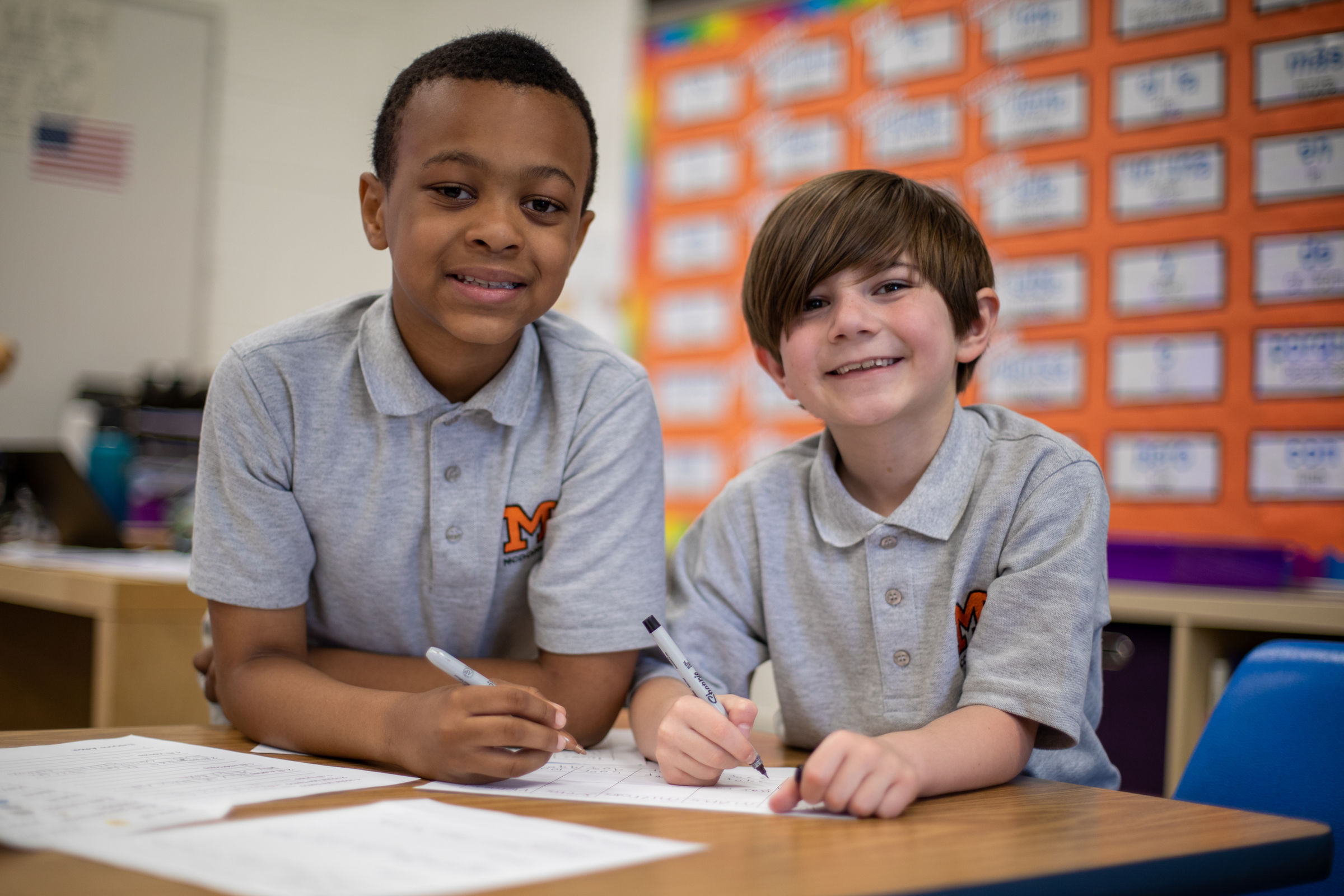Our comprehensive approach to literacy incorporates phonemic awareness, phonics, fluency, vocabulary, and comprehension. Teachers are specially trained to provide differentiated instruction using systematic and explicit phonics instruction, individualized vocabulary tools, grammar training, and a structured literacy program focusing on essential foundational skills and knowledge-building content. Utilizing the reciprocal relationship between reading and writing, students gain skills and confidence as they develop a passion for literacy in all its forms.
K-4 Curriculum

Students come to McDonogh with a variety of experiences and backgrounds. They are naturally curious and have a desire to learn. Under the loving care of our dedicated faculty, students grow intellectually, artistically, physically, socially, and emotionally. Guided by the tenants of our school-wide LifeReady Strategic Plan, our creative and coordinated academic program provides the stimulation and direction necessary to challenge eager young minds. Children are encouraged to be their authentic selves, take intellectual risks, and even make mistakes in our safe and supportive environment.
Typically, students are grouped into four homeroom sections of approximately 16 students where they learn reading, writing, phonics, language arts, math, and social studies. Special subject teachers instruct students in global connections, library/media, performing arts, physical education, science, Spanish, visual arts, and technology.
Literacy
Math
In Lower School math, students learn the "why" behind the "how," which results in deeper mathematical thinking far beyond rote procedural fluency. This learning model asks students to first develop their mathematical reasoning before connecting their understanding to concepts and skills. Teachers use direct instruction, differentiated small groups, independent practice, and a hands-on, collaborative approach to develop and build mathematical understanding. This approach allows students to recognize the importance of math in everyday life and learn growth mindset strategies that encourage resilience, critical thinking, and problem-solving.
Social Studies
The Social Studies program uses the LifeReady framework and national standards to help students develop the understanding and knowledge needed to be active participants in their ever-changing world. Each year, students build on their prior knowledge and expand their understanding of overarching concepts and ideas. What is the relationship between people, place, and environment? How can perspective impact someone's understanding of history? What are my rights and the rights of others? Children are asked to reflect on these big ideas while exploring areas of community, climate, geography, government systems, history, and change, among many others. Through this inquiry-based approach, students learn to think critically, consider issues from various perspectives, question, and see connections across all subject areas.
Science and Engineering
Science and engineering in the Lower School are rooted in students' most-asked question: “Why?” This question drives their exploration and learning, laying the groundwork for deeper understanding. The hands-on program stimulates their innate curiosity, allowing active engagement with the material. Students explore life science, physical science, earth science, robotics, coding, and engineering through various activities and experiments. This comprehensive approach helps them understand how these disciplines interconnect and apply to the real world. Children develop essential problem-solving skills by observing, predicting, and analyzing data, fostering a lifelong love for science and engineering.
Spanish Language
Starting in prekindergarten and continuing through fourth grade, Lower School students embark on their Spanish language journey with a strong emphasis on developing verbal comprehension and oral proficiency. Engaging activities such as read-aloud, games, daily conversations, songs, role-playing, and various authentic cultural experiences make students active participants in their learning. This dynamic approach helps them frequently and confidently use key language concepts and vocabulary, deepening their interest and excitement for learning Spanish.
Instructional Technology
McDonogh's Lower School Instructional Technology program equips students to navigate the digital world confidently and responsibly. They learn to use school-curated resources, communicate effectively, and create and share their work. Lessons are age-appropriate and integrated with the classroom curriculum to enhance learning. Prekindergarten to prefirst students use iPads, while first to fourth graders work on Chromebooks with tablet capabilities. Internet safety and digital citizenship are key components of the curriculum.
Performing Arts
In the Lower School, students find joy in the performing arts while developing a solid foundation in rhythm, singing, creating, moving, and improvisation. They nurture their talents and discover new abilities in a supportive environment. The performing arts program also includes yearly performances for students in every grade, and optional individual music lessons are available.
In third and fourth grades, students can select electives like choir, drama, drum corps, strings, and laptop orchestra. These offerings provide varied experiences that ignite students' passions and enhance their performance and musical growth.
Visual Arts
The Lower School Visual Arts curriculum nurtures curiosity, intuitive thinking, discovery, and exploration. Young artists build foundational skills and techniques using various materials, such as printmaking, collage, painting, ceramics, sculpture, drawing, and fiber art. They learn to create strong compositions and practice early art concepts, becoming familiar with the elements of art and design principles while learning about diverse artists, styles, and processes.
In third and fourth grades, students can choose additional visual arts electives such as woodworking, animations, drawing and painting, and ceramics.
Physical Education
The goal of physical education is to engage students in physical activity while encouraging collaboration, perseverance, sportsmanship, and team building. The Lower School program also helps students develop and refine gross and fine motor skills. Swimming and horseback riding lessons are included for students in prefirst and grades first through fourth as well. Games and activities encourage active listening, sharing, working together, and having fun!
Library/Media
In a bright and inviting library space, students develop a deep appreciation for reading through storytime, book talks, and engaging research projects. All grade levels have regularly scheduled class times, but students may check out books anytime. Students are also introduced to the traditional and technological resources that put them in touch with the vast world of information surrounding them.
